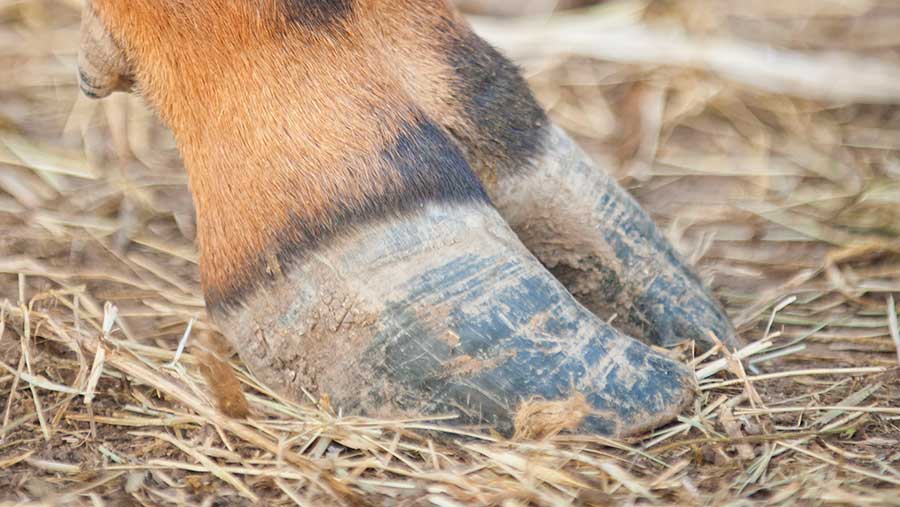Compost bedding found to improve cow hoof health
 © WestEnd61/Rex/ Shutterstock
© WestEnd61/Rex/ Shutterstock Sawdust could be best employed as a bedding material in open-plan barns rather than cubicles, according to an Austrian dairy trial.
A hoof health comparison of cows housed in compost-bedded free housing (CBB) and free-stall cubicles (FCB) has found compost-bedded systems resulted in less heel horn erosion (HHE), concave dorsal wall (CDW) and white line disease (WLD).
See also: Top 10 tips to help avoid cow lameness in winter months
Researchers at the University of Veterinary Medicine in Vienna said sawdust used in CBB was “especially good” for claw health.
They found compost bedding reduced the number of claw lesion cases.
Academics have also found mastitis rates and bulk somatic cell counts are lower in CBB systems. Likewise, open space is conducive to the animals exhibiting herd hierarchy, the university said.
The study found:
- The prevalence of lameness was low in both study groups, without a statistically significant difference between CBB and FCB.
- However, cows in CBB had a significantly lower prevalence of HHE, CDW and WLD, the latter seen as a cause of lameness.
Cleanliness is key
Even if modern barn layouts give dairy cows more freedom to roam, animals can still be exposed to manure and urine, says Johann Burgstaller, lead researcher on the study.
“The excrement increases the floor humidity and has negative consequences for claw health,” he says.
“The result is claw lesions, such as foot-rot or white line disease. Floor humidity softens the skin between the claws, which makes it susceptible to bacterial infections. The reduced horn quality can lead to lesions and, in serious cases, sole haemorrhages.”
How the study assessed hooves
Hoof health was rated based on two indicators; cow claw score and farm claw score.
Locomotion was assessed and hoof trimming was done once or twice a year in the study, which ran from March 2014 to July 2015.
Five farms were compared using each type of housing system. Breeds were mainly Fleckvieh, with the remaining 7% being Holstein Friesian.
A claw-trimming database was used to document 14 claw horn lesions using a three-stage severity grade (3=worst).
Hooves were assessed with a system that uses 10 claw zones to classify lateral, medial, hind and foreclaws.
Farms selected had similar flooring and milk production levels, with a herd size of about 20-40 cows housed year-round.
What is a compost-bedded pack dairy barn?
- Loose cattle housing consisting of a bedded area and a feeding area split by an area of concrete or slatted flooring.
- Found to allow more natural behaviour and social interaction compared with freestalls.
- Can use composted biodegradable waste heated and treated with Lactobacillus spp.
- Consists of fine, dry wood shavings and sawdust aerated once or twice a day.
